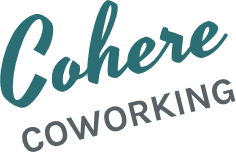Coworking breaks down the emotional barriers (and sometimes the physical ones too) that the traditional business world put up to keep us each in our place. Isolated. After working in this vacuum for a few years, its no wonder some of the best and brightest are striking out on their own, trading a little financial security for a lot of professional freedom. Coworking provides solopreneurs with exactly what they’re looking for: a place where collaboration and community are highly valued, where social capital is more important than currency, and where titles and profit margins take a back seat to the unique talents that each of us bring to the table.
According to author Sebastian Olma, this paradox of wonderfulness is an emerging business trend, and it has a name: Serendipity. In his new book, The Serendipity Machine: A Disruptive Business Model for Society 3.0, Olma defines serendipity as “value creation based on unexpected encounters.” Companies like Google and LinkedIn are starting to realize that in order to access outside the box thinking, they need to let their thinkers roam outside the office. Olma claims that (with the help his book, of course) companies can alter their culture to become “serendipity machines”, places where these valuable encounters have no choice but to take place.
In essence, he’s teaching companies how to become more like coworking spaces.
When you join a coworking space, you plug in to an instant community. No business cards, no elevator pitches. You simply take your seat, and the interactions begin. The person at the next desk asks your name and what you do. Some members invite you out to lunch and you exchange tales about crappy clients. The community manager posts a social media message about someone looking for design help, exactly the kind you love, by the way, and in two days, you’ve landed a new gig.
These aren’t imaginary scenarios of serendipity, they happen every day in coworking communities. They are “accidents” that almost always lead to abundance, emotionally, professionally, and often, financially.
According to Olma, however, fixed coworking spaces are flawed. The example used throughout the book is Seats2Meet.com, a Dutch company that helps people find temporary work, meeting, or event spaces usually located inside the walls of an established company. This model, with its constantly shifting players, is what the author considers to be the “ideal” serendipity machine. In fact, he thinks the level of serendipity a coworking space can achieve is limited by the number of members.
“The membership model creates a natural barrier, turning a potentially open network into an internal and therefore somewhat closed community,” sais Olma. “Through the membership model, coworking spaces even run the risk of creating relatively exclusive community islands that, instead of exploiting their shared serendipity, weaken each other through unnecessary network competition.”
This would seem to suggest that unless you’re part of a massive coworking community like Indy Hall or CoCo, there’s probably not going to be enough serendipity to go around. We call bullshit on this statement. Olma’s feeling about coworking spaces assumes that members operate in a “No Girls Allowed” clubhouse mentality. He assumes that as members of a coworking space, we only associate with other coworkers, and as such, are only willing to refer work to someone who is also a member.
Raise your hand if the only people you know are also members of your coworking space. Yeah, that’s what I thought.
Perhaps unbeknownst to Olma, coworkers are a diverse lot. We have lots of friends, neighbors and connections, many of whom may work for traditional firms or companies. We may have contacts in other cities, states, or countries. We may even (gasp) have had traditional jobs in the past, and maintain relationships with our former coworkers. Our collaborative mindset compels us to seek out the right person for the job, and that means also drawing on our vast network of non-coworking acquaintances.
Coworking doesn’t exist in a vacuum. We don’t isolate ourselves from the rest of the community. Rather, we are merely one organism in this ecosystem, constantly working for the good of us all. That’s why coworking is the fast track to serendipity. So if you don’t have a big company, or want want to give this trend a try before starting your transformation into a “Serendipity Machine”, let your employees cowork for a day or two a week. We’ve got all the serendipity you need.
Want to hear more about how to accelerate serendipity in your life and work? Cohere founder Angel K. will be speaking on the topic at the upcoming Global Coworking Unconference Conference (GCUC) in Austin, TX. Check out her panel “Serendipity on Steriods” to learn more about how it can be fostered and measured.
Image via pfjk/Flickr

